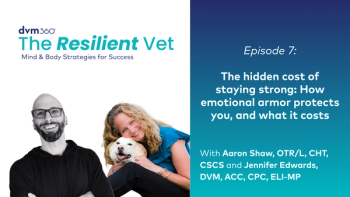
Population management 101 (Proceedings)
Many shelters are faced with diseases that seem resistant to typical treatment protocols.
Many shelters are faced with diseases that seem resistant to typical treatment protocols. Not only do individual animals fail to respond to medications but it is also difficult to lower or eliminate disease prevalence in the population. For these reasons it is much more satisfying to focus on disease prevention rather that treatment. Preventative practices save lives and money, improve the lives of the animals in shelter care and even reduce staff stress. Preventative tools include population management, vaccination, sanitation, disease detection, isolation and separation, as well as many others.
Although every one of the preventative practices mentioned above, as well as almost everything that is done to care for shelter animals, could be considered a part of "managing" the population, population management is key in maintaining a healthy population of dogs and cats in shelters. Without at least a rudimentary plan to avoid crowding, shelters can experience constant disease outbreaks even if the other preventative tools are in place. The very basics of a good population management protocol for an individual shelter should include:
1.) Its current and historical population dynamics;
2.) Its capacity for animal housing and care;
3.) Its animal care days and average length of stay;
4.) Its co-mingling policies and practices;
Basic population management
In general, a shelter population management protocol includes:
• Shelter Intake and live release rate
• Housing capacity
• Animal care days
• Average length of stay
• Co-mingling (cage sharing)
• A daily population monitoring system
Intake to live release disparity
Intake vs. "outtake" disparity is the crux of most shelters' problems. While every effort should be made to improve the number and percentage of animals that will leave the shelter alive, it is essential to monitor the difference between intake and live release in order to effectively manage the shelter population without creating additionally crowded conditions. Ultimately, crowding leads to increases in disease and stress for staff and animals, which may negatively impact the live release rate. It is important to quantify the number of animals that arrive healthy at a shelter against the number that get sick, die or get euthanized due to illness. The disparity between intake and live release may be addressed from the intake side of the equation or by attempting to remove impediments and increase opportunities in the community or elsewhere for positive outcomes.
Increasing live release as well as decreasing intake will positively affect the live release rate. Although holding animals in the shelter does not positively affect the live release rate it may temporarily decrease the euthanasia rate. However, holding animals beyond the capacity of the facility may actually lead to decreases in the live release rate by increasing the incidence of infectious disease and stress induced illness.
Other outcomes, such as lost animals or animals that have died in shelter care, may serve as markers for husbandry concerns or data entry problems.
Capacity for housing
Capacity refers to the number of animals a shelter can humanely house. The term "humanely" includes giving each animal enough space, food and the ability to avoid stresses for the entire time it is at the shelter. Capacity is dramatically affected by intake numbers, physical space, housing units, staffing, and length of stay.
Animal care days
Animal care days are a way of evaluating the burden placed on both the animals and the shelter facility. One animal care day is the equivalent to one animal in the shelter system for one day. For example: 100 animals housed for 20 days each means 2000 animal care days. This clearly places a greater burden on a given staff and facility than 100 animals housed for 10 days (1000 animal care days) even thought the number of animals cared for is the same.
Average length of stay
This statistic can have a dramatic effect on daily in-shelter population. The table below is a simple example to show how daily population (inventory) increases as average length of stay increases even when animal intake remains constant. As daily population rises and approaches or exceeds shelter capacity for care and housing, accompanying detrimental increases are seen in the risk of infectious disease, stress, and behavioral deterioration.
The risk for each individual animal also increases with longer stays. When working with a shelter caring for thousands of animals per year, even minor delays at flow-through points such as movement to adoption or spay/neuter surgery can add up to very substantial numbers of additional days spent by animals in the shelter. These additional days not actively moving towards a positive outcome will affect many shelter dynamics. In order to realistically track staffing, facility, and resource needs, animal care days and length of stay are as important as monthly or annual intake.
Comingling
Co-mingling describes mixing of animals within individual runs or cages in the shelter facility. Co-mingling does not include co-housing of bonded animals or littermates. Co-mingling increases stress, agonistic behavior, fighting, and the risk of infectious disease for shelter animals. Co-mingling in foster care often increases risk of infectious disease problems.
Co-mingling may be temporarily necessary, and can be planned, in facilities where capacity is inadequate to meet legal or other holding requirements. Whenever comingling of dogs is necessary, it is important to ensure that compatible ones are housed together, and that an all-in all-out approach is used to reduce disease exposure and facilitate appropriate cleaning and disinfection between residents. Ideally animals who arrive at the shelter in close proximity to each other (ie. same day) are the best candidates for co-housing as long they are otherwise compatible.
Random co-mingling increases all the risks associated with co-mingling. Random comingling is most commonly found in shelters that have overextended well beyond their capacity for housing and care.
Management plans for decision making
A comprehensive population management plan is essential to maintaining good health and welfare in any animal welfare organization. Defined maximum levels of capacity and structured plans to move animals efficiently through the shelter system will make difficult daily decisions easier and prevent shelter crowding, Failure to move animals efficiently often results in significant animal suffering and unnecessary death. Standards must be defined for both expected and minimum acceptable levels for housing and individual animal care/welfare.
Once standards are in place, staff must have appropriate training and supervision, as well as adequate time to complete their tasks, in order to encourage acceptance and compliance with policies and practices. The chain of authority must be clearly defined with job tasks specifically assigned. Systems must be in place to regularly review population dynamics and daily population data in order to make effective decisions to best optimize the life saving capacity of the organization. This can be best accomplished by instituting formal daily rounds to assess each animal in the shelter. Conducting daily rounds by a team that includes both management and veterinarians/technicians not only increases communication but also quickly identifies animals that are not moving through the system. Prompt interventions to help the individual animal move (e.g. sterilization, behavior evaluation, move to foster, move to adoptions or scheduling humane euthanasia) will decrease the animal care days and thereby benefit every other animal in the shelter.
Newsletter
From exam room tips to practice management insights, get trusted veterinary news delivered straight to your inbox—subscribe to dvm360.




